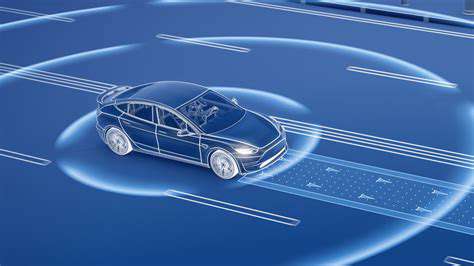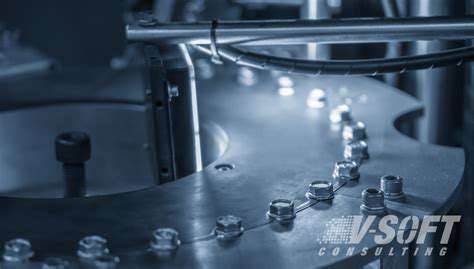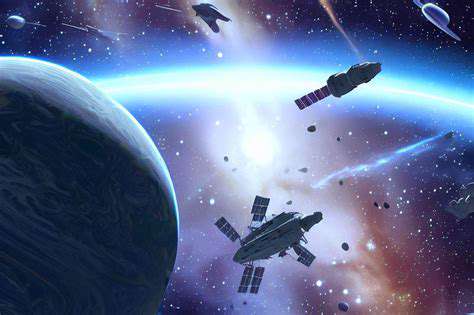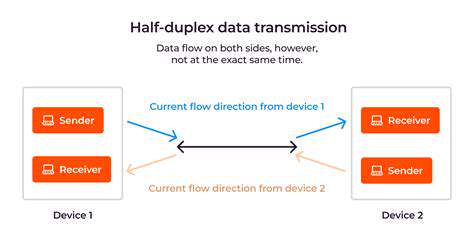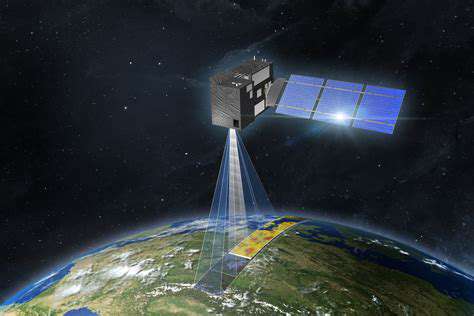The Sun's activity cycle, characterized by periods of high and low solar activity, is a fundamental driver of space weather. During periods of high activity, the Sun emits more energetic particles and radiation, potentially leading to more intense space weather events. Monitoring these cycles is essential for anticipating the potential intensity and frequency of space weather phenomena.
Understanding the complex mechanisms within the Sun, such as sunspots, prominences, and coronal holes, is vital to accurately predicting and assessing the potential impact of solar activity on Earth's environment.
Coronal Mass Ejections (CMEs): Powerful Solar Events
CMEs are massive expulsions of plasma and magnetic field from the Sun's corona. These events can carry billions of tons of material and significantly alter the space environment surrounding Earth. The speed and intensity of these expulsions are crucial factors in determining the potential impact on Earth's magnetosphere and technological systems.
CMEs can trigger geomagnetic storms, resulting in disruptions to satellite operations, power grids, and navigation systems. Understanding their trajectory and characteristics is key to mitigating their consequences.
Geomagnetic Storms: Terrestrial Impacts
Geomagnetic storms are disturbances in Earth's magnetosphere caused by solar wind variations, often triggered by CMEs. These storms can induce large currents in power grids, leading to blackouts and damage to transformers. The interaction of solar wind with the Earth's magnetic field can also disrupt satellite communications and navigation systems.
Furthermore, these storms can impact the performance of high-altitude aircraft and pose a risk to astronauts in space. Understanding these effects is crucial for developing mitigation strategies and ensuring the resilience of our technological infrastructure.
Space Weather Effects on Satellites
Space weather events pose a significant threat to the functionality of satellites. Radiation from solar flares and energetic particles can damage sensitive electronics, leading to malfunctions and even complete failures. The degradation of satellite components due to space weather conditions requires continuous monitoring and mitigation strategies.
Satellites in geostationary orbits are particularly vulnerable, as they are exposed to the full brunt of solar activity. Predicting and responding to space weather events is critical to maintaining the reliability of satellite-based services, such as communication, navigation, and weather forecasting.
Impacts on Power Grids: A Critical Concern
Geomagnetic storms can induce large currents in power grids, leading to widespread blackouts and extensive damage to electrical infrastructure. The unpredictable nature of space weather events makes it challenging to implement effective preventative measures. Advanced forecasting models and early warning systems are essential for mitigating the risk to power grids.
Space Weather and Human Health
While the direct impact of space weather on human health is not as well-understood as its impact on technology, astronauts in space are particularly vulnerable to the effects of high-energy radiation. Solar flares and other space weather events can increase the level of radiation, potentially leading to health risks for astronauts and even impacting the safety of long-duration space missions.
Further research into the effects of space weather on human health is necessary to fully understand the potential risks and develop appropriate countermeasures.
Developing Space-Based Mitigation Strategies: Active and Passive Approaches
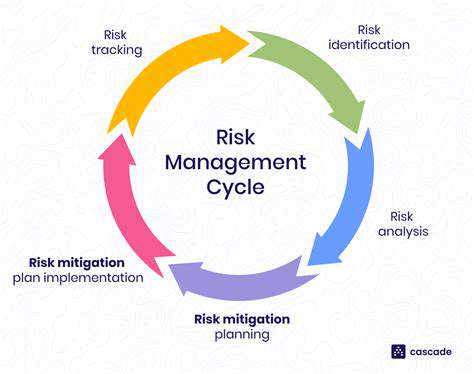
Orbital Debris: A Growing Threat
The increasing density of space debris poses a significant threat to active satellites and future space missions. This debris, ranging from defunct satellites to shattered rocket bodies, creates a hazardous environment for all spacecraft in orbit. Collisions with even small pieces of debris can cause substantial damage, potentially leading to mission failures and escalating the problem through further fragmentation.
The accumulation of this debris is a complex issue, driven by the ever-increasing number of space launches and the limited means of managing existing debris. This growing threat necessitates innovative solutions for effective space-based mitigation.
Active Debris Removal Strategies
Active debris removal (ADR) strategies are crucial for mitigating the orbital debris problem. These strategies involve deploying spacecraft specifically designed to capture, deorbit, or otherwise neutralize defunct satellites and other debris objects. This proactive approach is essential for preventing further proliferation of space junk.
Space-Based Detection and Tracking Systems
Advanced sensors and tracking systems are vital for monitoring and cataloging the orbital debris environment. These systems will provide critical information on the precise locations and trajectories of debris objects, allowing for more accurate predictions of potential collisions and the development of effective mitigation strategies.
The data gathered by these systems is essential for understanding the evolution of the debris field and for making informed decisions about future space operations.
Development of Capture and Removal Technologies
Designing and developing effective capture mechanisms for debris objects is a critical component of ADR. This involves developing robotic arms, nets, or other specialized equipment capable of safely capturing and maneuvering large or irregular objects. Significant research and development efforts are needed to overcome the challenges of capturing debris in various orbital configurations.
International Collaboration and Standardization
Addressing the orbital debris problem requires international collaboration and standardization. A global effort to establish common protocols and guidelines for space debris mitigation is essential for ensuring the safety and sustainability of space activities for all nations. This includes agreeing on protocols for deorbiting spacecraft and guidelines for handling space debris.
Economic Incentives and Regulatory Frameworks
Developing economic incentives and regulatory frameworks can encourage responsible space behavior and promote the adoption of ADR technologies. Financial incentives for companies that develop and deploy ADR technologies, along with clear regulations governing the disposal of spacecraft, can stimulate innovation and ensure the long-term sustainability of space operations.
Long-Term Sustainability of Space Operations
Addressing the orbital debris challenge is essential for ensuring the long-term sustainability of space operations. The strategies discussed above will not only mitigate the current threat but also prevent future accumulation of debris, creating a safer and more predictable space environment for present and future generations. This is critical for both scientific research and commercial activities in space.
A crucial aspect of any smart pet camera is its image quality. High-resolution cameras capture clear, detailed images of your pet, allowing you to easily spot any changes in their behavior or appearance. Look for cameras with at least 1080p resolution for good clarity, but consider higher resolutions like 4K for even finer detail, especially if you want to zoom in on your pet's features. This is particularly important if you need to verify specific details, such as injuries or changes in their coat condition.
Space-Based Systems for Power Grid Protection

Satellite-Based Power Transmission
Satellite constellations, strategically positioned in geostationary orbits, can offer a novel approach to power transmission across vast distances. This technology holds the potential to overcome geographical limitations and deliver electricity to remote or underserved areas. Satellite-based power transmission systems could be particularly beneficial in regions with challenging terrain or inadequate ground infrastructure. By leveraging microwave or laser beams, these systems could transmit energy efficiently, minimizing losses along the way.
The complexity of building and maintaining such a system, however, is significant. Challenges include ensuring reliable and uninterrupted signal transmission, managing the enormous energy demands of the satellites, and addressing potential interference with existing communication networks. Despite these hurdles, the prospect of a global, interconnected power grid via satellite technology remains an exciting possibility.
Solar Power Satellites
Solar power satellites (SPS) represent a futuristic concept that aims to harness the immense energy of the sun in space. These systems would collect solar energy using large arrays of mirrors or photovoltaic cells in space and then convert it into microwave or laser beams. These beams would be directed toward receivers on Earth, which could then convert the energy into usable electricity. This concept has the potential to offer a sustainable and virtually inexhaustible source of clean energy.
The practical implementation of SPS faces formidable technological and economic hurdles. Significant research is needed to develop advanced materials and technologies for collecting and transmitting energy at scale. Furthermore, the high initial investment costs associated with deploying such a system make it a long-term prospect.
Space-Based Energy Storage
Space-based energy storage systems offer a potentially revolutionary approach to addressing intermittent energy sources, such as solar and wind. By storing energy in space using advanced technologies, these systems could provide a buffer to stabilize power grids and ensure a more reliable supply. This approach could be especially beneficial in regions with fluctuating energy production.
Microgrids and Space-Based Integration
Integrating space-based systems with microgrids can create robust and resilient power networks. Microgrids, by their nature, are localized power systems that can operate independently of the main grid. Combining this local autonomy with the potential of space-based transmission or storage creates a more adaptable and flexible energy infrastructure. This integration could enhance grid stability and reliability, especially in regions prone to natural disasters or grid outages.
Laser Power Transmission
Laser power transmission technology offers a high-efficiency method for beaming energy from space to Earth. Lasers can transmit large amounts of energy across significant distances with minimal loss. The potential for precise energy delivery and the reduction of transmission losses make laser transmission a promising pathway for future power systems. However, challenges remain in achieving the necessary power levels and maintaining the stability of the laser beam over long distances.
Environmental Considerations
The environmental impact of space-based power systems needs careful consideration. The launch and deployment of satellites and other space-based infrastructure can contribute to space debris, raising concerns about orbital congestion and potential collisions. Furthermore, the energy production and transmission processes must be evaluated for potential environmental consequences, such as thermal emissions or electromagnetic interference. Thorough environmental assessments are crucial in the development and implementation of these technologies.
